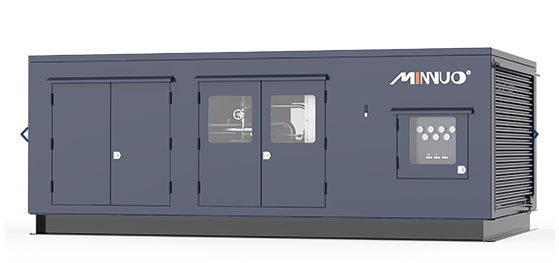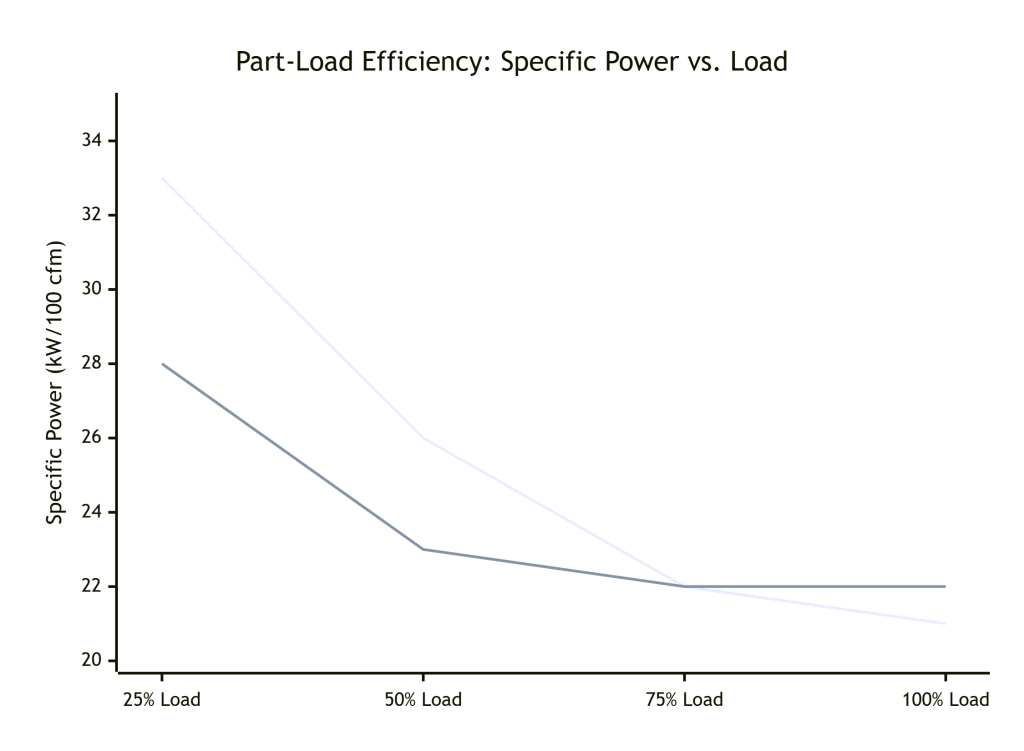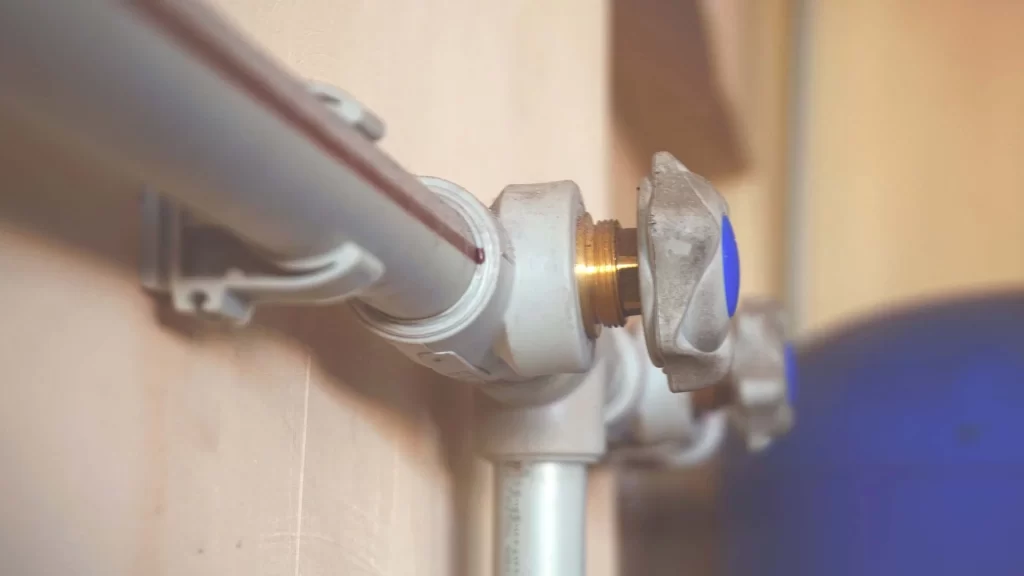Air compressors are now common in industrial development. Let’s see if I’ve addressed what you want to know! This article will analyze the basic information, advantages and disadvantages, and performance parameters of air compressors.
Air compressors are general mechanical equipment that convert electrical energy into potential energy. Their working principle is to compress air and store it in pressure vessels. Air compressors are widely used in industrial production and daily life for various purposes, such as providing power, inflation, spraying, and driving pneumatic tools.
If you want to understand air compressors, let’s start with their main components:
- Motor: Provides the power source for the compressor.
- Compression Elements: Pistons, screws, rotors, etc., are used to compress air.
- Cooling System: Used to cool the heat generated during compression.
- Air Receiver: Stores the compressed air.
- Control System: Controls the start, stop, and operation of the compressor.
- Discharge System: Removes water and oil produced during compression.
Air compressor components are similar, but their types vary based on different working principles, which can be divided into the following:
- Reciprocating Compressors: As the name suggests, they compress air through the reciprocating motion of pistons in cylinders.
- Screw Compressors: Utilize the rotation of screws.
- Centrifugal Compressors: Rely on centrifugal force for compression.
- Sliding Vane Compressors: Work through the reciprocating motion of vanes in rotor slots.
Different principles and types lead to their own advantages and disadvantages. To further understand and make a better choice, let’s continue.
Reciprocating Compressors:
- Advantages: They can operate over a wide pressure range with high efficiency, and the discharge pressure hardly changes with volume adjustment. The structure is simple and mature, fitting for small to medium air flows and pressures ranging from low to ultra-high.
- Disadvantages: They are larger and heavier, have complex structures, many wear parts, and require significant maintenance. The discharge is discontinuous, the airflow is uneven, and there is more vibration and noise during operation.
Screw Compressors:
- Advantages: High reliability, few parts, no wear parts, reliable operation, and long life. They are easy to operate and maintain, highly automated, have good dynamic balance, suitable for high-speed operation, and especially suitable as mobile compressors. They are adaptable, with a volume flow that is hardly affected by discharge pressure, maintaining high efficiency.
- Disadvantages: They are more expensive and may require a complex lubricating oil system, leading to an increased size of the unit. The noise level may be higher than other types of compressors.
Centrifugal Compressors:
- Advantages: They handle large volumes of gas, have a simple and compact structure, are lightweight, and occupy less space. There are no wear parts such as valves and piston rings, operate smoothly and reliably. There is no friction between the impeller and the housing, no need for lubrication, and they are suitable for direct drive by industrial turbines or gas turbines.
- Disadvantages: Not suitable for occasions with too little gas or too high pressure ratio. The stable operating range is narrow, and although gas volume adjustment is convenient, the economy is poor. The efficiency is usually lower than that of reciprocating compressors, and they may require speed-increasing gear transmission, increasing manufacturing difficulties and structural complexity.
Sliding Vane Compressors:
- Advantages: They have a simple structure, few moving parts, high reliability, and long operating life. The maintenance cost is low, and there are few consumables. They have excellent adaptability and efficient transmission efficiency, with low oil content in the exhaust and high purity of the supplied air.
- Disadvantages: The technology may still be immature or blank in the field of large units, with a relatively small application range, and may not be suitable for very large exhaust volume requirements.
The performance parameters of air compressors are key factors in assessing their work efficiency and applicability. Understanding their performance parameters is crucial for choosing the right air compressor to meet specific application needs.
Exhaust Volume:
We measure the volume of gas discharged by the compressor per unit of time in cubic meters per minute (m³/min), which directly relates to the compressor’s ability to provide gas.
Discharge Pressure:
Measured in MPa or bar, it reflects the degree of gas compression by the compressor. Power, measured in kilowatts (kW), indicates the energy consumption level of the compressor. Specific power, the power consumption per unit of exhaust volume, is an important parameter for assessing energy efficiency. Additionally, the energy-electricity ratio, the electrical energy consumed to produce each cubic meter of compressed air, is also one of the indicators for evaluating energy efficiency.
Discharge Temperature as a Key Safety Indicator:
It refers to the temperature of the gas discharged from the main unit. Noise levels, measured in decibels (dB), are parameters for assessing the compressor’s environmental performance. Pressure drop, the pressure loss of compressed air as it flows through the pipeline, is crucial for evaluating both pipeline design and compressor performance. We determine the energy efficiency class of volumetric air compressors based on specific power, as stipulated by the national standard GB19153, with different threshold values for varying pressures.
Compression Ratio:
The ratio of discharge pressure to intake pressure measures the effectiveness of compression, while compression power is the power consumed per unit of time. Compressor efficiency represents the energy utilization efficiency during the compression process, and the discharge temperature is the temperature of the gas at discharge. The volume of the air receiver tank affects the stability of system pressure and the continuous provision of airflow, and pipeline size will impact the system’s pressure drop and gas flow rate. Understanding these performance parameters is essential for selecting the appropriate air compressor to meet specific application requirements.
When considering cost-effectiveness, the efficiency of the compressor is also an important factor. It is understood that its efficiency is closely related to its working principle.
- Reciprocating Compressors: These compressors use pistons moving back and forth in cylinders to compress air, capable of providing high pressure, but their efficiency may not be as high as some modern designs such as screw or centrifugal compressors.
- Screw Compressors: They compress air through the rotation of screws and are favored for their high efficiency, low maintenance, and high reliability. They are particularly good at handling large gas flows and can maintain high efficiency under partial loads.
- Centrifugal Compressors: They rely on centrifugal force to compress gas and are very suitable for applications that require a large amount of gas and a high pressure ratio. They are especially efficient under high flow requirements but are not suitable for applications with low flow and low pressure ratios.
- Sliding Vane Compressors: They compress air through the reciprocating motion of vanes in rotor slots. Sliding vane compressors have a simple structure and are easy to maintain, but their efficiency may not be as high as screw or centrifugal compressors.
After reviewing this basic information, everyone should have a certain understanding of air compressors. I hope everyone can choose the most suitable air compressor for themselves!







 Email
Email sales:+86 15366749631
sales:+86 15366749631

